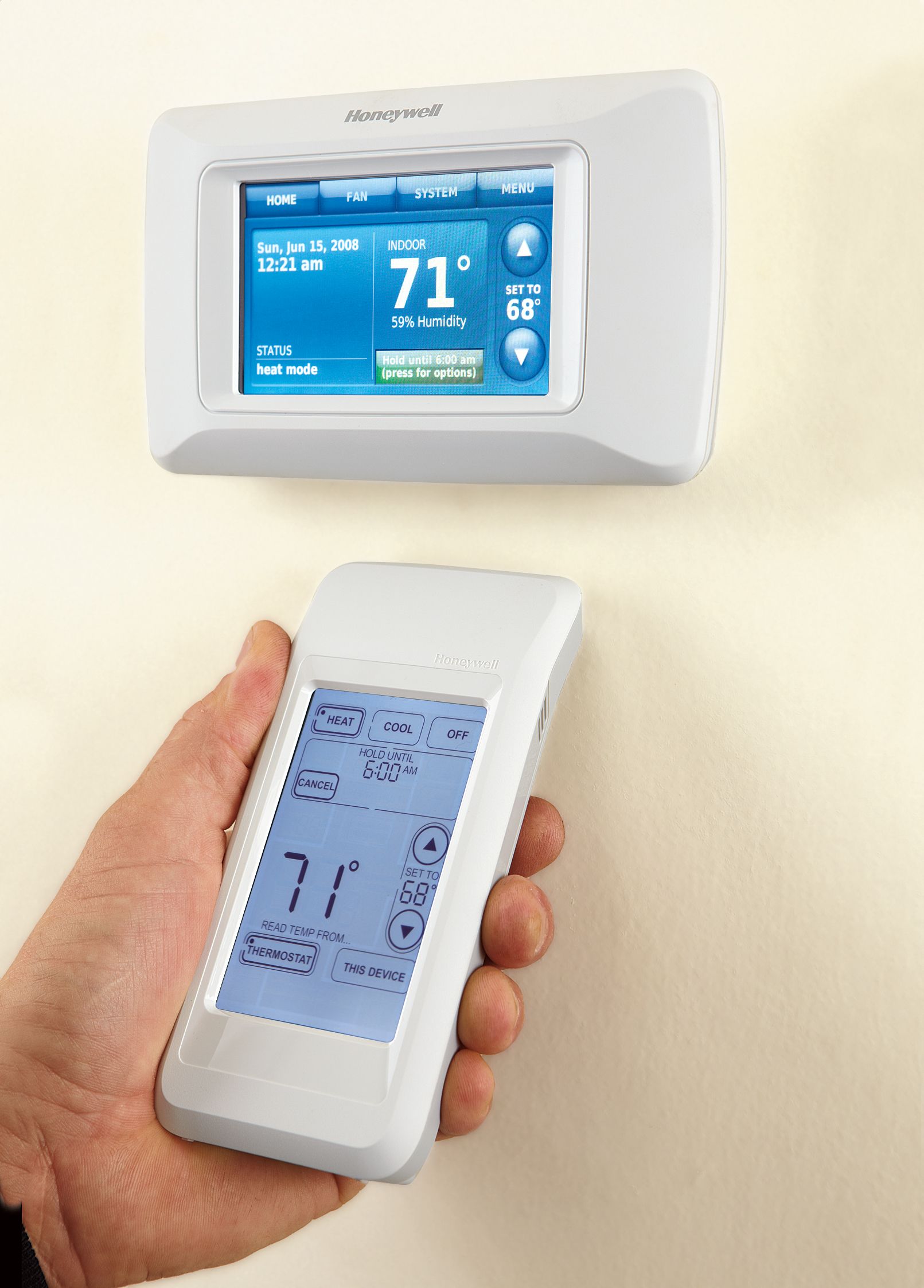Installing an energy-saving programmable thermostat reduces energy costs and improves your home’s comfort. This simple upgrade can trim about $180 off your annual heating and cooling expenses, according to the Environmental Protection Agency (EPA). With some do-it-yourself (DIY) know-how, you can install a new thermostat in about an hour.
Types of Programmable Thermostats
First, you’ll need to decide what type of programmable thermostat you want to install. Consider the features you need and how much you’re willing to pay.
Basic Programmable Thermostats
Basic programmable thermostats are affordable and allow you to set different temperatures for various times of the day. You can find these models at hardware stores for around $25. They’re simple to use and—with proper programming—provide significant energy savings. Basic thermostats are a solid choice for homeowners looking for an economical solution without advanced features.
Smart Thermostats
Smart thermostats offer advanced features like learning capabilities, remote access via smartphone apps, and integration with home automation systems. These devices can analyze your usage patterns and adjust settings for optimal comfort and efficiency. While they’re more expensive than basic units, ranging into the hundreds, smart thermostats often provide greater energy savings and convenience. They adapt to your schedule and preferences, making them a seamless part of your home environment. To learn more, check out our guide on how to install a smart thermostat.
Wi-Fi Enabled Thermostats
Some smart thermostats use Wi-Fi to connect to your home network. This lets you control your HVAC system from anywhere using a smartphone or computer. These thermostats offer the flexibility of remote access and often integrate with other smart home devices for a more robust home automation system. Features like remote diagnostics and automatic service alerts make maintenance easier and more efficient.
Tools and Materials for Programmable Thermostat Installation
To install a programmable thermostat like the one we use in this guide, you’ll need the following tools and materials:
- Screwdriver
- Wire stripper
- Drill and bits (if needed for mounting)
- Pencil
- Level
- New programmable thermostat
- Batteries (if required by your model)
- Wire labels or masking tape
 Screwdriver
Screwdriver Needle nose pliers
Needle nose pliers Drill/driver
Drill/driver
Preparing for Thermostat Installation
Before you begin the installation process, take some preparatory steps to help you avoid common pitfalls and streamline the entire process.
Checking Compatibility
Not all thermostats are compatible with every HVAC system. Before buying a new thermostat, check your existing wiring and consult the manufacturer’s compatibility guidelines.
As Lance Marques, HVAC contractor at Swezey Fuel Co., advises, “Before you buy a replacement thermostat, take a peek at your existing wiring. If there are only two wires, the simplest solution is to get a replacement with a battery-powered display.”
Turning Off Power to Your HVAC System
Safety should always be your top priority when working with electrical systems. Before you begin, turn off the power to your HVAC system at the circuit breaker or fuse box. This prevents the risk of electrical shock. Always double-check that the power is off by attempting to turn on your HVAC system after you’ve switched the breaker off.
Removing the Old Thermostat
Once you’re prepared for installation, you can remove your old thermostat.
Labeling Wires
Proper wire labeling helps you connect the cables correctly to your new thermostat. Marques recommends, “As you disconnect each wire from its terminal, label the wire with the letter of the terminal it came from. Tape the wires to the wall so that you don’t lose them.” This will save you time and confusion later on.
Removing the Mounting Plate
After labeling the wires, unscrew the old thermostat’s mounting plate from the wall. Be careful not to let the wires fall back into the wall cavity. If your old thermostat contains mercury, dispose of it properly. For information on proper disposal, visit the Thermostat Recycling Corporation. Recycling mercury thermostats is important for environmental safety.
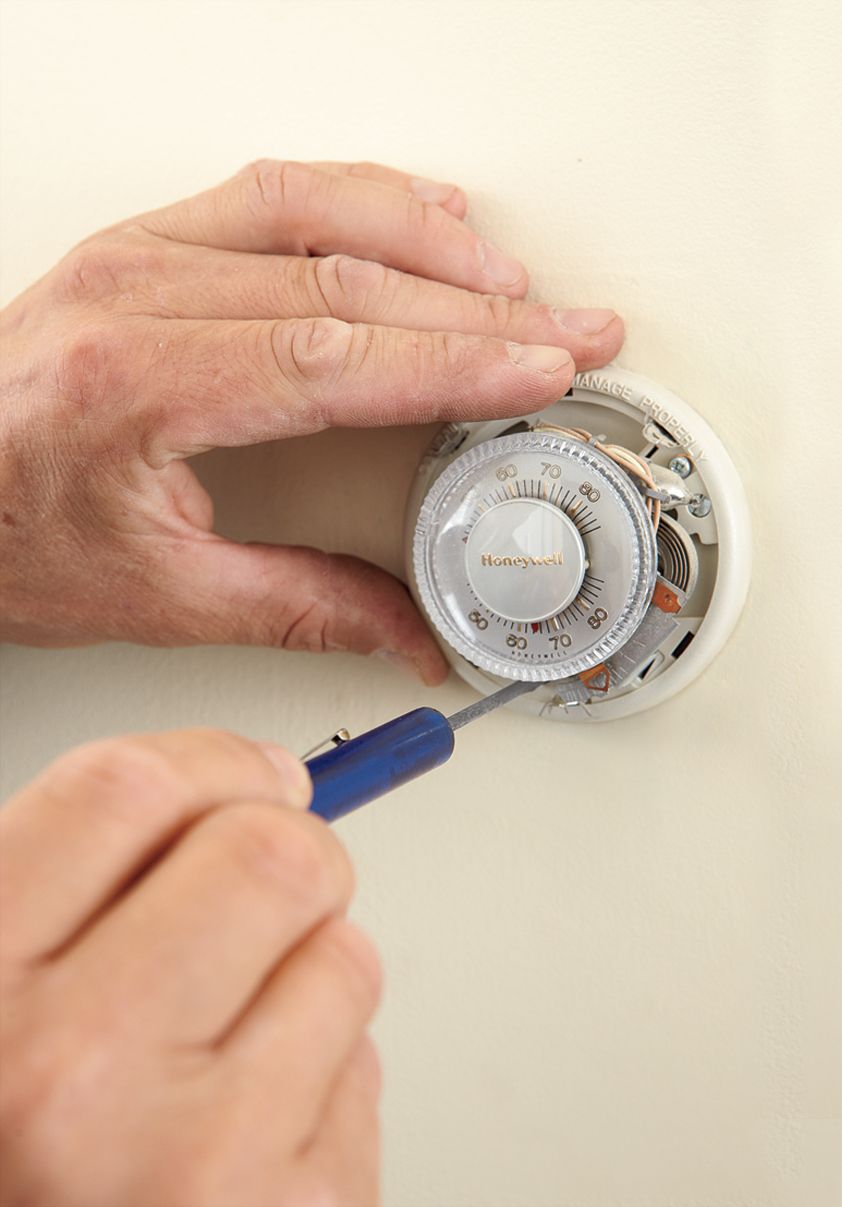
Installing the New Programmable Thermostat
After removing the old thermostat, you’re ready to install your new programmable thermostat. This process involves mounting the new bracket, connecting the wires, and attaching the thermostat face. For the best results, follow the specific instructions that come with your new thermostat and our general guidelines below.
Mounting the New Bracket
Leveling the bracket will ensure your thermostat sits correctly. Start by aligning the new mounting bracket with the hole in the wall. Use a level to check that it’s straight, then mark the new screw holes if needed. Drill any needed pilot holes, then secure the bracket to the wall with the screws.
Connecting the Wires
Now it’s time to connect the wires to your new thermostat. Marques advises connecting the cables to the terminals on the bracket, following the instructions in the diagram. Most thermostats require at least three low-voltage cables: one for power and two for controlling the heating and cooling systems. If you only have two wires, you may need to call an electrician or HVAC contractor to run an additional wire. You must connect each wire to the correct terminal to avoid any malfunctions.
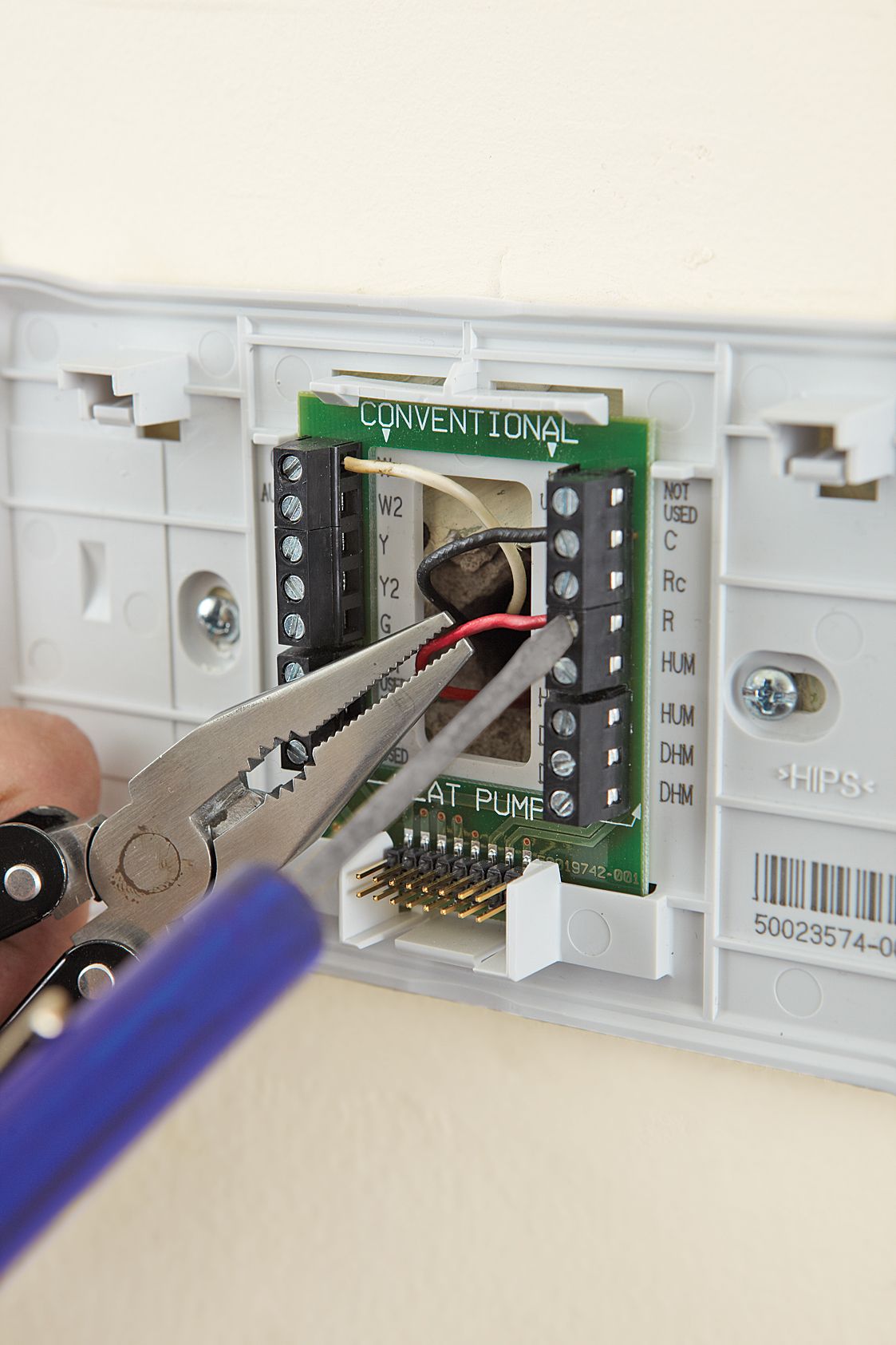
Attaching the Thermostat Face
Once you have the wires connected, attach the thermostat face to the mounting bracket. Carefully align the pins on the back of the thermostat with the terminals on the mounting plate, then gently push the thermostat into place until it clicks. Make sure it’s secure before testing it to prevent it from falling off later.
Connect to the Furnace
If needed, hook up the new wire to the furnace and turn on the furnace’s power. Now, snap the thermostat’s face onto the bracket.
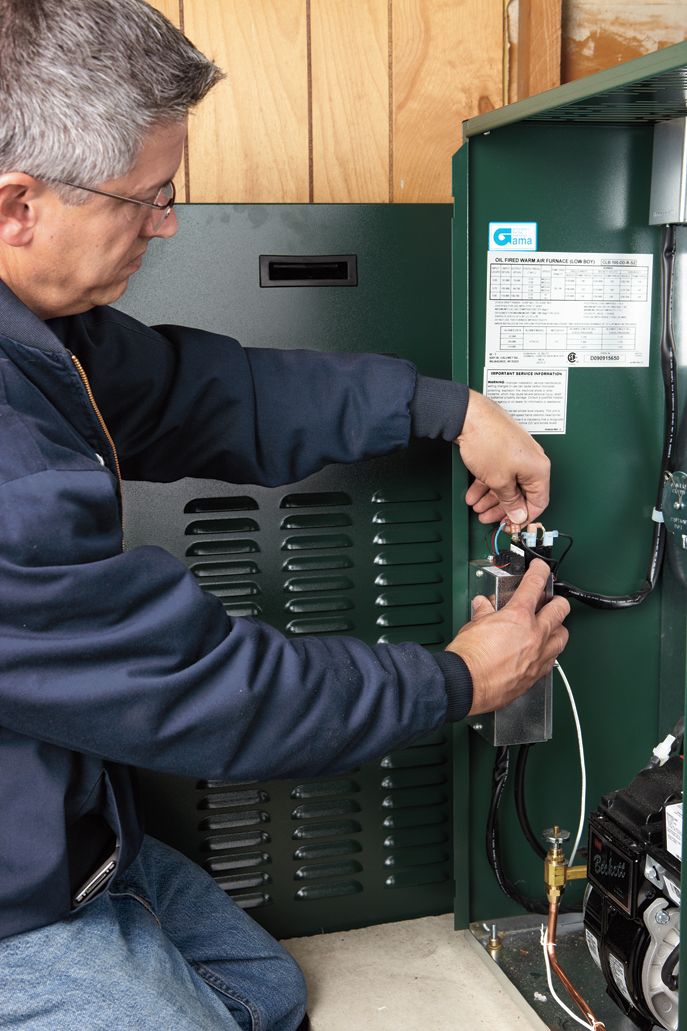
Mount the Outdoor Sensor
This wireless, battery-powered device allows the thermostat to display outside temperatures. Turn it on while standing next to the thermostat. When both units establish a connection, place the sensor in a bracket mounted on the north side of the house above the snow line.
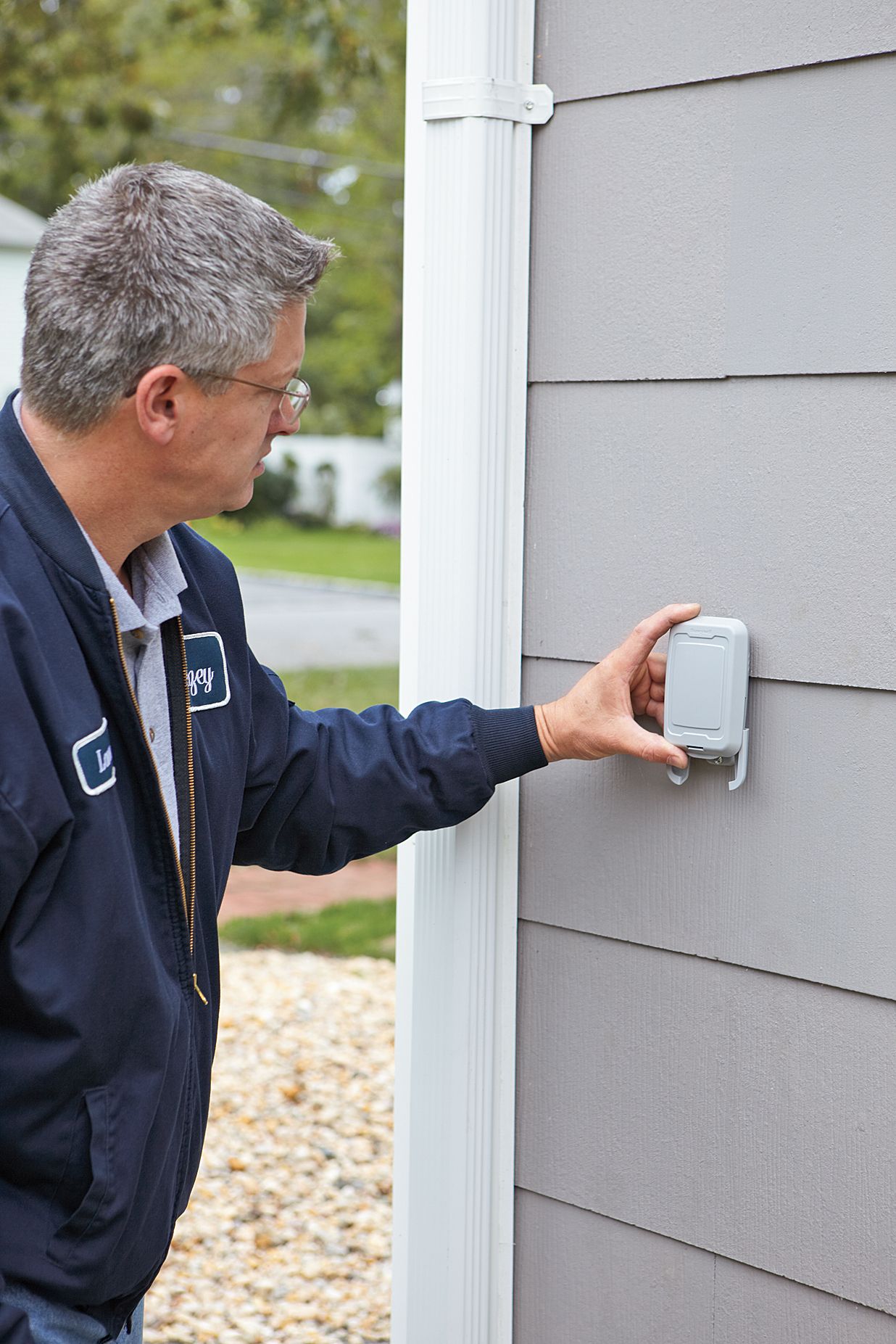
Programming Your New Thermostat
After installation, it’s time to program your new thermostat for optimal energy savings.
Setting the Time and Date
Set the correct time and date on your thermostat. This step makes your programmed schedules work correctly. Follow the prompts to set the temperatures you want the house to be when you wake up, leave for work, return home, and go to bed. An accurate clock allows the thermostat to follow your desired temperature settings at the right times.
Creating Temperature Schedules
Next, set up your temperature schedules. Most programmable thermostats allow you to create different schedules for weekdays and weekends. Consider setting lower temperatures when you’re asleep or away from home and more comfortable temperatures when you’re active and at home. We recommend starting with a simple schedule and adjusting based on comfort and savings. Check out our guide on the best thermostat settings to learn more.
Troubleshooting Common Programmable Thermostat Installation Issues
If you encounter issues during installation, consult your thermostat’s manual for troubleshooting tips. Common problems include incorrect wire connections, incompatible systems, or power supply issues. If you’re unsure about any step in the process, don’t hesitate to contact a professional. Many manufacturers also offer customer support hotlines for additional help.
Additional Programmable Thermostat Features To Consider
Modern programmable thermostats often have additional features to enhance your home’s comfort and energy efficiency. Evaluating these features can help you choose a thermostat that best meets your needs.
- Geofencing capabilities: Advanced smart thermostats offer geofencing features, which use your smartphone’s location to adjust temperatures when you leave or return home automatically. This means that your home always has the right temperature without you manually changing the settings.
- Humidity control: Certain programmable thermostats can monitor and control your home’s humidity levels, improving indoor air quality and comfort. Proper humidity levels can protect your home’s structural integrity and improve your living environment.
- Outdoor temperature sensors: Some thermostats, like the one we installed, include outdoor temperature sensors. These wireless devices allow the thermostat to display outside temperatures and adjust indoor settings for optimal efficiency. This feature leads to more precise temperature control within your home.
Energy-Saving Tips for Your New Programmable Thermostat
To maximize energy savings with your new thermostat, consider these tips:
- Set temperatures back by 7–10 degrees for eight hours a day (while you’re at work or asleep) to save up to 10% on your heating and cooling costs.
- Avoid overriding your programmed settings frequently, as this can negate potential energy savings.
- Use the “vacation” or “hold” settings when you’re away for extended periods.
- Take advantage of any energy reports or usage data your thermostat provides to fine-tune your settings.
- Make gradual adjustments to your settings to find a balance between comfort and energy savings.
When To Call a Professional
Many homeowners can successfully install an energy-saving programmable thermostat on their own, but there are situations where we advise bringing in professional help. If your HVAC system is complex, you’re uncomfortable working with electrical wiring, or you encounter any issues during installation, it’s best to call a licensed HVAC technician or electrician. These pros have the expertise to troubleshoot and resolve any issues quickly.
Our Conclusion
Installing an energy-saving programmable thermostat is a relatively simple DIY project that can lead to significant energy savings and improved home comfort. Following the steps outlined in this guide, most homeowners can successfully upgrade to a programmable thermostat in about an hour. The investment can pay for itself quickly through energy savings while providing better control over your home’s climate.
